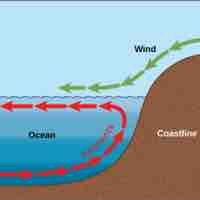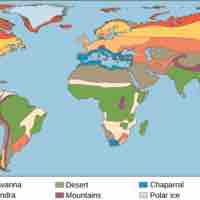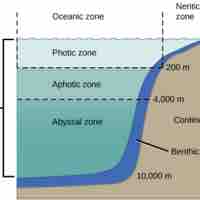Chapter 44
Ecology and the Biosphere
By Boundless
Ecology is the study of organisms, populations, and communities as they relate to one another and interact in the ecosystems they comprise.
Organismal and population ecology study the adaptations that allow organisms to live in a habitat and organisms' relationships to one another.
Community ecology studies interactions between different species; abiotic and biotic factors affect these on an ecosystem level.
Biogeography is an ecological field of interest that focuses on the distribution of organisms and the abiotic factors that affect them.

The availability of energy and nutrient sources affects species distribution and their adaptation to land or aquatic habitats.
Temperature and water are important abiotic factors that affect species distribution.
Soil structure, oxygen availability, wind, and fire are abiotic factors that have influences on species distribution and quantity.
The two most important abiotic factors affecting plant primary productivity in an ecosystem are temperature and moisture.

A biome consists of all the habitats of a community that make up similar ecosystems in a particular region.
Tropical wet forests are characterized by high precipitation and humidity, while savannas have scattered trees and an extensive dry season.
Subtropical deserts are characterized by their dry environments, while chaparrals are characterized by the presence of shrubs.
Temperate grasslands are areas with low annual precipitation, fluctuating seasonal temperatures, and few trees.
Temperate forests are characterized by fluctuating seasonal temperatures and constant-but-moderate rainfall.
The boreal forest is characterized by coniferous trees, while the arctic tundra is characterized by permanently frozen soils.

Abiotic factors that influence aquatic biomes include light availability, depth, stratification, temperature, currents, and tides.
The ocean and coral reefs make up two types of marine biomes where organisms are influenced by depth and light availability.
Estuaries, composed of a mix of fresh and salt water and their living communities, are influenced by salinity and the changing tides.
Lakes, ponds, rivers, streams, and wetlands are all freshwater biomes, which differ in depth, water movement, and other abiotic factors.

Climate refers to long-term, predictable atmospheric conditions, while weather refers to atmospheric conditions during a short period of time.
Global climate change is cyclical and happens naturally; however, modern human society's impact has had unprecedented negative effects.
Global climate change can be understood by analyzing past historical climate data, such as atmospheric CO2 concentrations in ice cores.
Results of climate change, past and present, have been documented and include species extinction, rising sea levels, and effects on organisms.